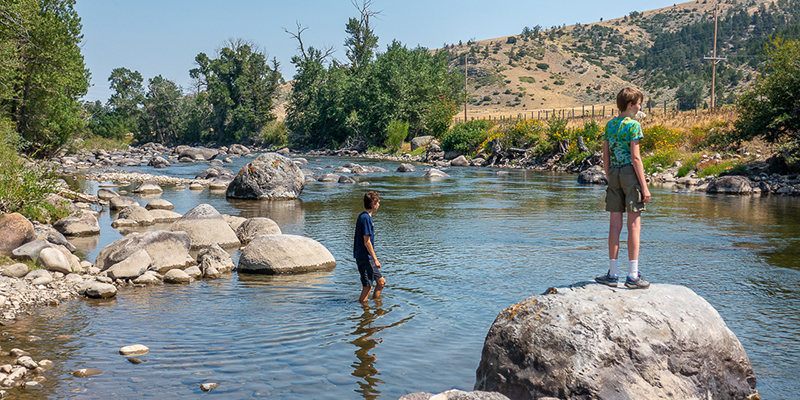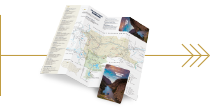A Day on the Boulder River
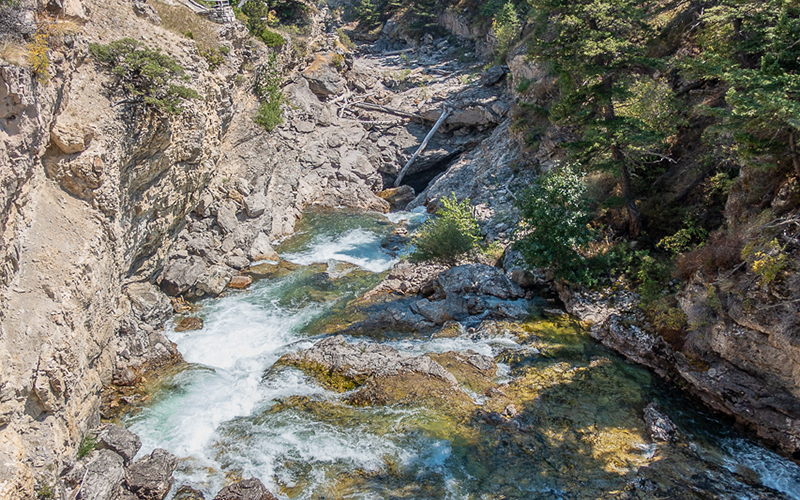
Photos and story by Melynda Harrison
The Boulder River is one of Montana’s most lovely waterways. It starts in the high mountains of the Absaroka Beartooth Wilderness near the northern border of Yellowstone National Park and meets the Yellowstone River 60 miles later near Big Timber.
While the Boulder is a plentiful river for angling cutthroat, rainbow, and brown trout, it can also be a companion for other explorations.
My teenage boys and I spent a day following the Boulder and getting to know the town of Big Timber, the river, and the landscape surrounding it.
The Boulder River is generally thought of as having two sections: the Upper Boulder, upstream from Natural Bridge Falls, and the Lower Boulder, from the falls to its confluence with the Yellowstone River. We stuck to the Lower Boulder for this outing.
We began our day in Big Timber, a town of less than 2,000 people. Big Timber got its name from Big Timber Creek, which was named by William Clark of Lewis and Clark fame. He was inspired in his naming by the large cottonwood trees along the creek.
In the late 1800s, Big Timber was a major wool-shipping depot thanks to its many sheep and location on the Northern Pacific Railroad line.
The town is in a large valley along the Yellowstone River, and its skyline is marked by the Crazy Mountains to the northwest and the Absaroka and Beartooth Ranges to the south.
Our first stop at the Crazy Mountain Museum gave us a better understanding of the landscape and history of the area.
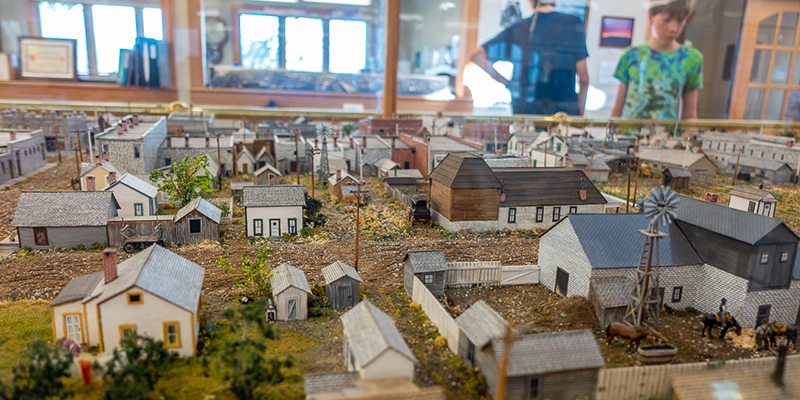
Crazy Mountain Museum
Open from Memorial Day to Labor Day; the Crazy Mountain Museum features exhibits and archives related to the history of Sweetgrass County. A highlight is “Cobblestone City,” a large model of the town of Big Timber in 1907, a year before a fire destroyed a large chunk of downtown and the residential area. We used the scavenger hunt sheet and spent 45 minutes looking for items in the model town. It was incredibly captivating.
In addition to other exhibits showing the area from the Ice Age to the present day, there are several interesting outbuildings including, a tipi, a one-room schoolhouse, several sheep wagons, and a replica Norwegian stabbur.
Big Timber Bakery
When you travel with kids or teens, food is always a priority. We ate a second breakfast at the Big Timber Bakery, surrounded by locals and the scent of cinnamon rolls. They serve hearty, homemade breakfast and lunch. Check their Facebook page or call ahead as their hours change.
Boulder Forks Fishing Access
Full of cinnamon rolls and breakfast, we stopped at the Boulder Forks Fishing Access site to wade around in the Boulder River. This spot is perfect for fishing and a nice place to cool down.
Big boulders dot the river, and cottonwoods provide some shade.
From Big Timber, drive 16 miles south on Hwy 298.
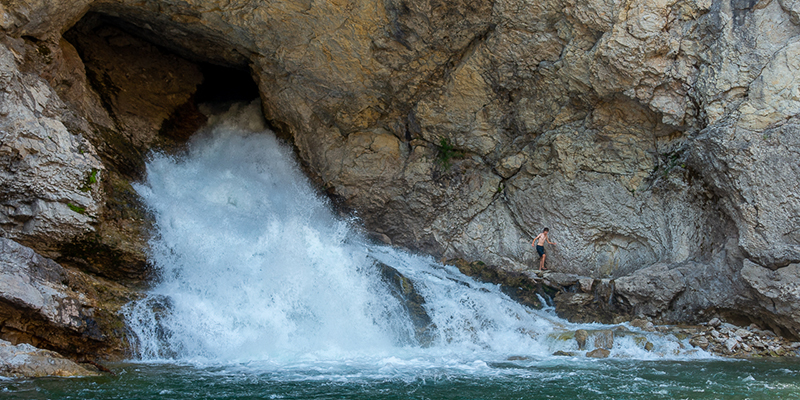
Natural Bridge Falls
We’ve visited Natural Bridge Falls many times. In late spring or early summer, when the Boulder River is running high, a 100-foot waterfall tumbles over a limestone cliff. The rest of the year, the river disappears under a limestone shelf and pours out a hole in the cliff. After gathering in a pool at the base of the waterfall, the river goes underground once more and reappears down the valley.
We brought a picnic with supplies from the Big T IGA Market in Big Timber and took advantage of the picnic tables tucked in the trees near the parking lot. Satiated for the moment, we walked the trails around the waterfall and down to the base of the fall.
There was once a natural bridge spanning the river, but it collapsed in 1988. Interpretive signs along the 1/4-mile paved and accessible trail on the east rim explain the hydrologic and geologic processes that shared the area, as well as showing some of the plants and animals that live there.
Once you cross the bridge (and stop to take photos!), the dirt rail winds around to another view of the waterfall and a couple of towers that rock climbers utilize.
From Big Timber, drive 26 miles south on Hwy 298.
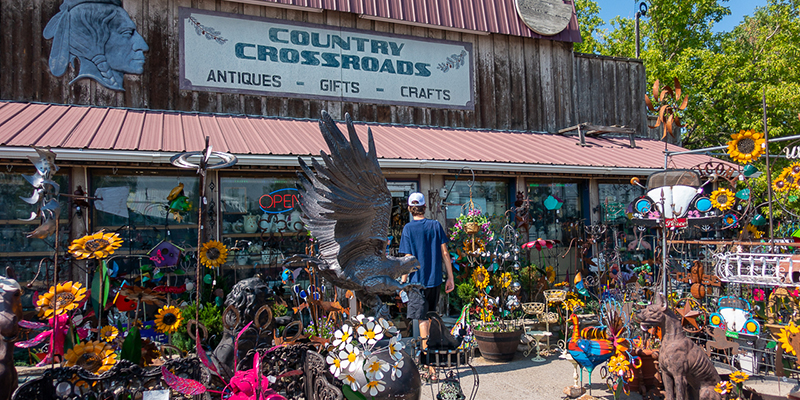
Country Crossroads Antiques
We drove back to Big Timber after playing around at Natural Bridge and stopped into a shop that has always piqued my curiosity, but for some reason, I hadn’t visited.
This antique/gift/art shop was a mall of interesting items. It’s much larger on the inside than it appears on the outside but is still crammed with books, jewelry, teacups, housewares, cowboy hats and boots, tools, dolls, ranch items, a friendly cat, and so much more. It was a true wonderland, and there is so much to look at.
We left with a Scandinavian troll, a 1965 world atlas, and a black bear sculpture to hang over the side of a potted plant.
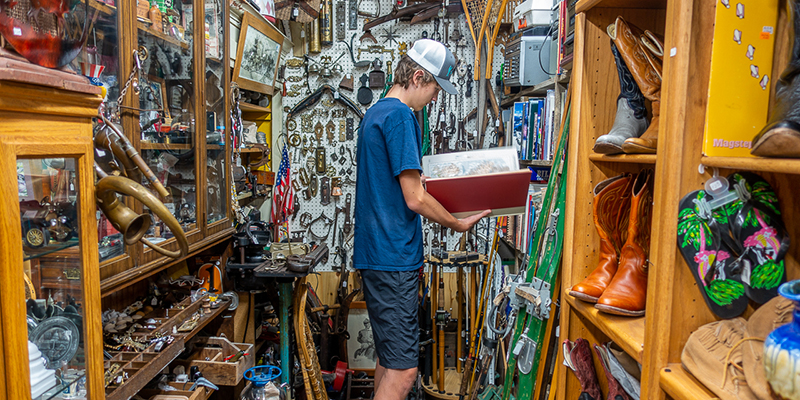
Crazy Peak Brewing Company
Not surprisingly, my boys were ready for a snack. We stopped into the local brewery where they could drink sodas and chow chips and salsa while I sipped a craft beer. To keep with the theme of the day, I had the Boulder River IPA in which, “the hops flow out of this beer like a river to the sea, let the hops wash over you.”
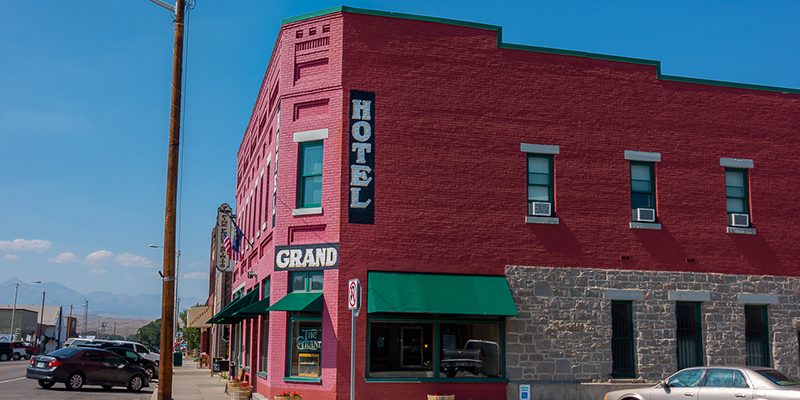
The Grand Hotel
After wandering around Big Timber for a bit, we finished the day with dinner at The Grand Hotel. The building was built in 1890 and is listed on the National Register of Historic Places. It’s beautifully restored and is home to a restaurant as well as a hotel.
They serve locally raised beef and lamb as well as seafood that is flown in daily. We always eat in the more casual part of the restaurant near the bar, but there is a fine dining room, too. Reservations are recommended for the dining room.
There are more things to see and do in Big Timber and along the Boulder River, but not enough time in one day to do it all.
When my kids were younger, we loved to play at the fort-themed playground in Lion’s Club Park. There are art galleries, bars, and restaurants along McLeod Street and Highway 191, and Greycliff Prairie Dog State Park is nearby.
Continuing up the Boulder River from Natural Bridge Fall, the road turns into gravel and can be a bumpy ride, but there is access to trails on both sides of the valley and Forest Service campgrounds.
I encourage you to grab your kids, partner, or dog and follow the river to see where it leads.
